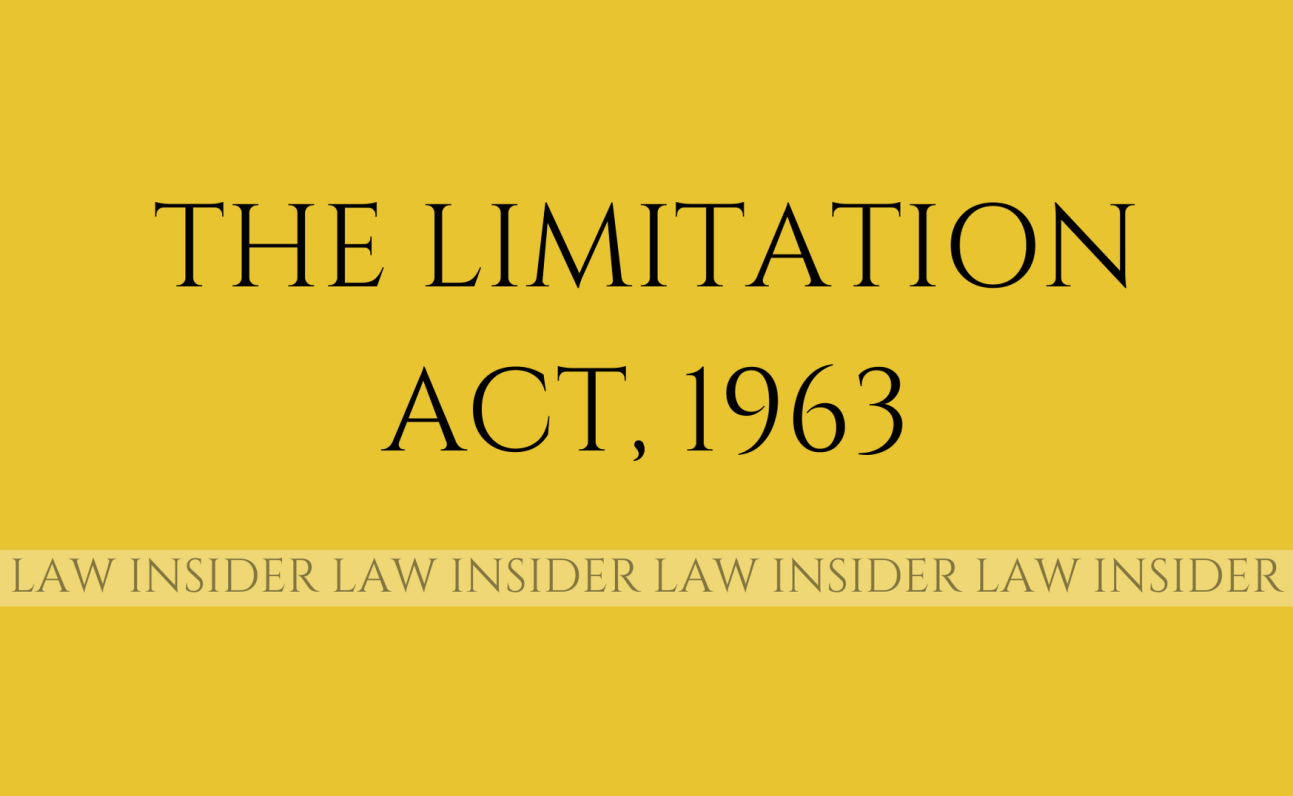Athul Roshal Kumar
Limitation Act, 1963 is the legislation which administers the period within which a suit has to be initiated; it can also be defined as an aggregate of the procedure.
Additionally, the Act deals with delays in initiating the suit/application/appeal under the competent court by the aggrieved party with its primary focus being to provide the aggrieved party with a remedy given by the law as nobody should be denied justice if he/she has a sufficient cause for the delay in filing the suit.
It was fundamentally promulgated to safeguard the party adhering to limitations in dispute and punishing those who are ignorant of his/her rights. It guarantees that the parties do not exploit delaying tactics while litigating.
It is a legislation that values the time; as time is precious and once wasted would not revisit. It states the lifespan for every remedy as with time the new complexities arises and more parties arise pursuing a legal remedy. In a scenario wherein there exists no such limitation, it shall lead to numerous complications and consequential lawlessness.
Cases
Radha Krishna Rai v. Allahabad Bank & Ors. (2000) 9 SCC 733
In the present matter, there existed a delay of 1418 days, which naturally caused the expiry of the limitation period.
Nevertheless, the appellant appealed that he was acting under an incorrect impression that the appeal was filed and was pending before the Hon’ble High Court, which was later disproven. It was discovered that no such appeal was filed by his counsel.
The Hon’ble Court held that although the delay extended for a prolonged period of time, there existed sufficient cause as the appellant had no intentions to cause a delay. Therefore, the application made under Section 5 of the Limitation Act, 1963 was accepted.
B.K. Educational Services Private Limited v. Parag Gupta and Associates (2019) 11 SCC 633
The Hon’ble Supreme Court of India in the present matter held that the Limitation Act, 1963 is applicable to proceedings under Sections 7 and 9 of the Insolvency and Bankruptcy Code, 2016 since the inception of the Code i.e. from December 1, 2016.
Collector Land Acquisition v. Katiji & Ors. AIR 1987 SC 1353
The present matter laid down several guidelines to be followed while interpreting the Limitation Act under a proceeding. The points stated by the Hon’ble Court include:-
- The litigant should not derive any benefits from filing an appeal after the prescribed limitation period has elapsed.
- When the delay is condoned, there exists the possibility of meritorious matters being dismissed. Therefore, the doctrine of Audi Alteram Partem must be followed. The final decision must be delivered only after awarding all the parties involved a reasonable opportunity of being heard.
- The tenet that ‘Every delay must be explained’ must be applied in a reasonable manner. For example, a delay of a minute or a second can be questioned.
- When there exists a choice between deliverance of substantial justice and technical complications; substantial justice must be given priority.
- The court must not presume that the delay was deliberately caused due to negligence or malafide intentions.
SN. Balakrishnan v. M. Krishnamurthy, (1998) 7 SCC 123
In the present case the Apex Court widened the scope and ambit of law of limitation as follows:-
- It was stated that the condonation of delay is a matter of discretion of the court. Section 5 of the Limitation Act does not state that such a discretion can be exercised only if the delay is within a certain limit.
- Length of delay is no matter, acceptability of the explanation is the only criterion. Every so often, the delay of the shortest range may be uncondonable due to a want of satisfactory explanation although in certain other cases, delay of a very long range can be condoned as the explanation provided is reasonable.
- Once the court accepts the explanation as satisfactory, it is the result of positive exercise of discretion and generally the superior court take care not to disturb such a finding, much less in revisional jurisdiction, save the exercise of discretion was on wholly unsustainable grounds or was arbitrary or perverse.
- On the other hand, it is a dissimilar matter when the court of first instance declines to condone the delay. In such instances, the superior court(s) are be free to consider the cause shown for the delay afresh and it is open to the superior court to reach its own finding – being unhindered by the verdict of the lower court.
Popat Bahiru Govardhane v. Land Acquisition Officer, (2013) 10 SCC 765
In the present case, it was held by the Hon’ble Court that the limitation Act applies to courts and not to quasi-judicial authorities.
Furthermore, it was held that the law of limitation may possibly austerely affect a particular party but, nonetheless has to be applied when the statute prescribes the same. Moreover, that the Court(s) are devoid of the power to extend the period of limitation on equitable grounds, even if the statutory provision may cause hardship or inconvenience to a particular party.
Conclusion
The primary objective that the Limitation Act, 1963 is to place a bar on the time period wherein the distressed party can institute a suit/application/offer within the court. The term limitation should to be literally translated as the term itself states it’s meaning i.e. confinement or circumstances which are limited.
Condonation of delay is the remedy given to the parties in the event that they fail to approach the competent court. This condonation has been worked out as a discretionary power of the court. The legal standpoint in India has been unusually permissive and has ruled in support of the aggrieved party.

